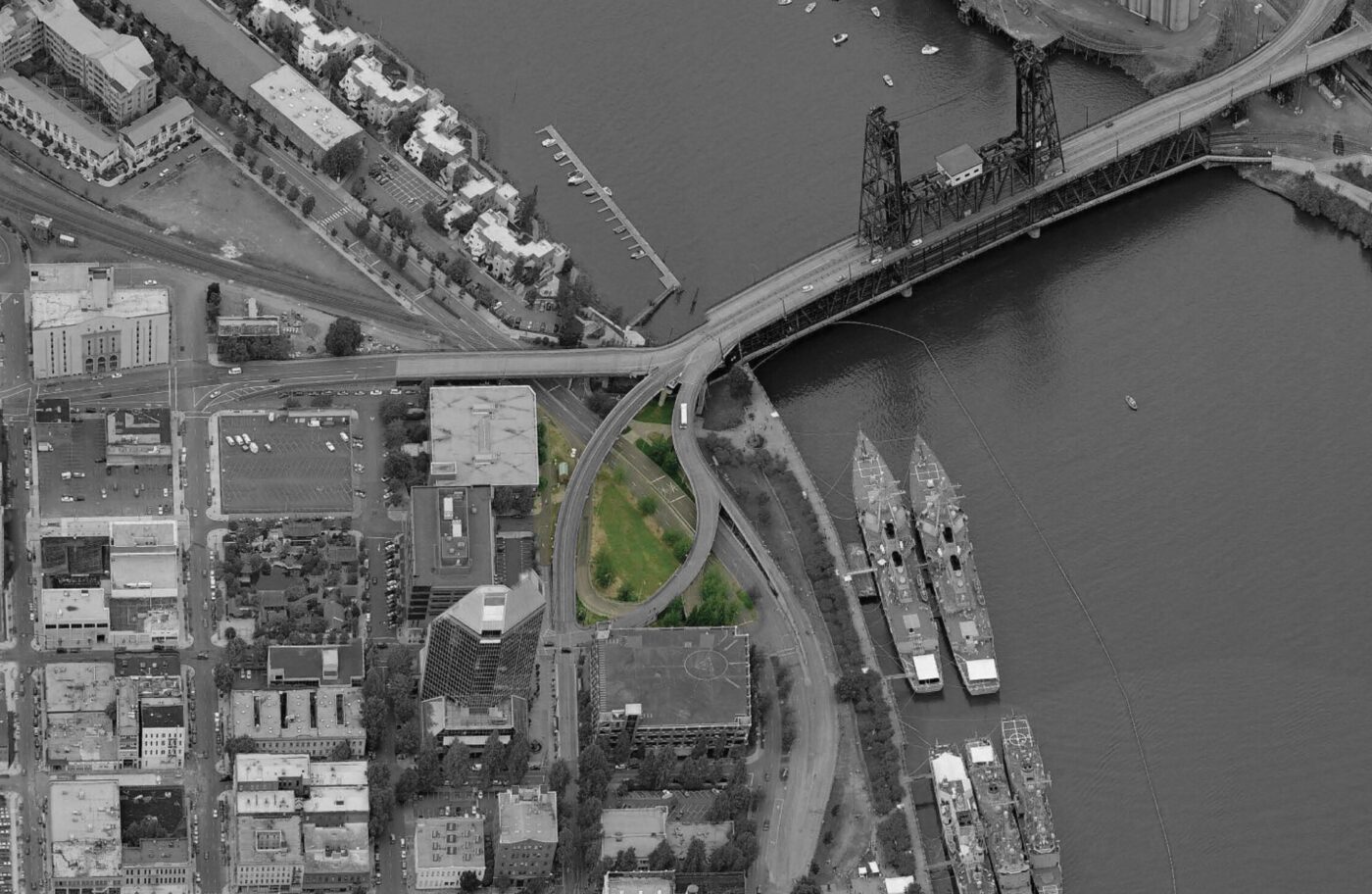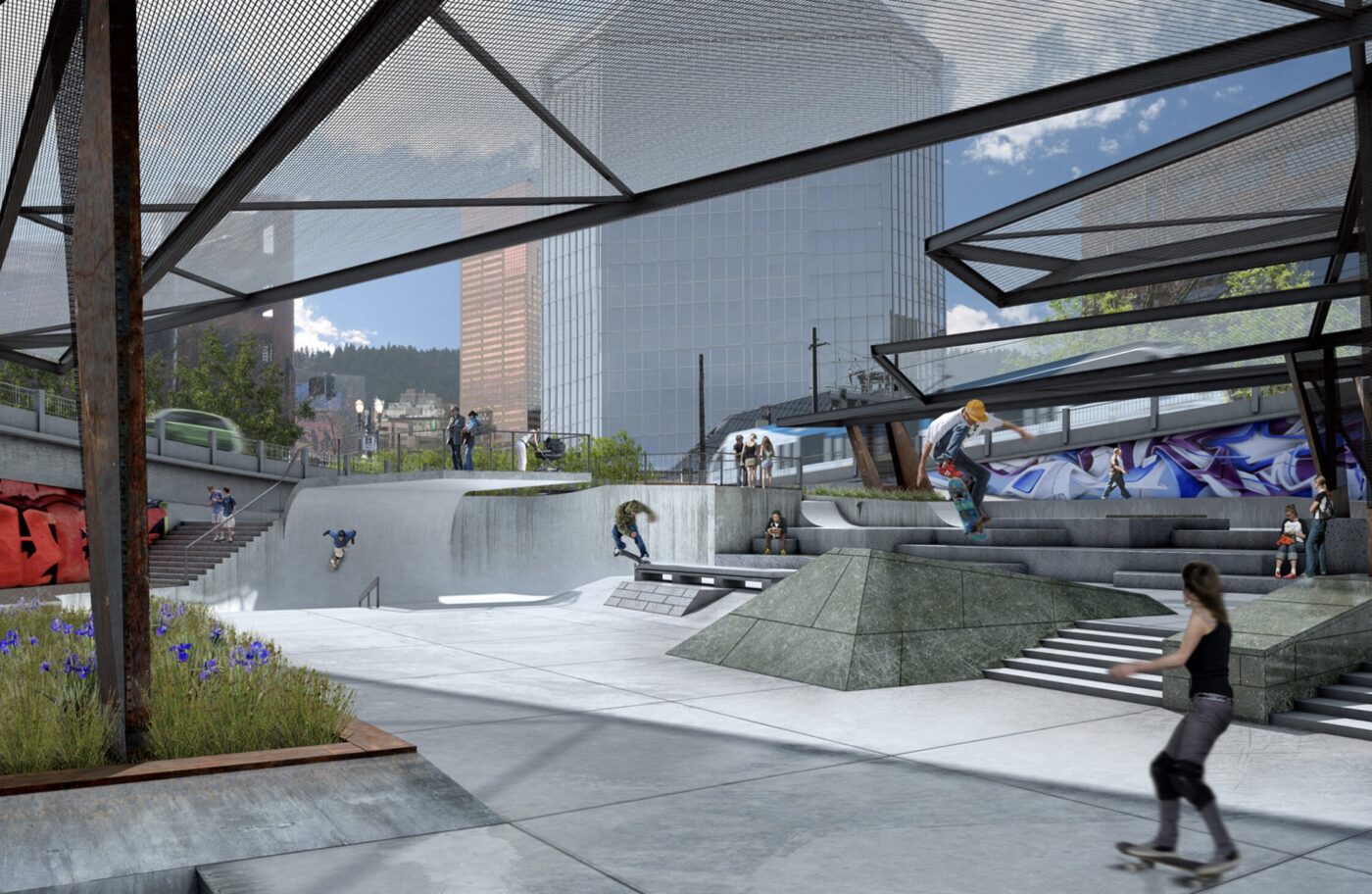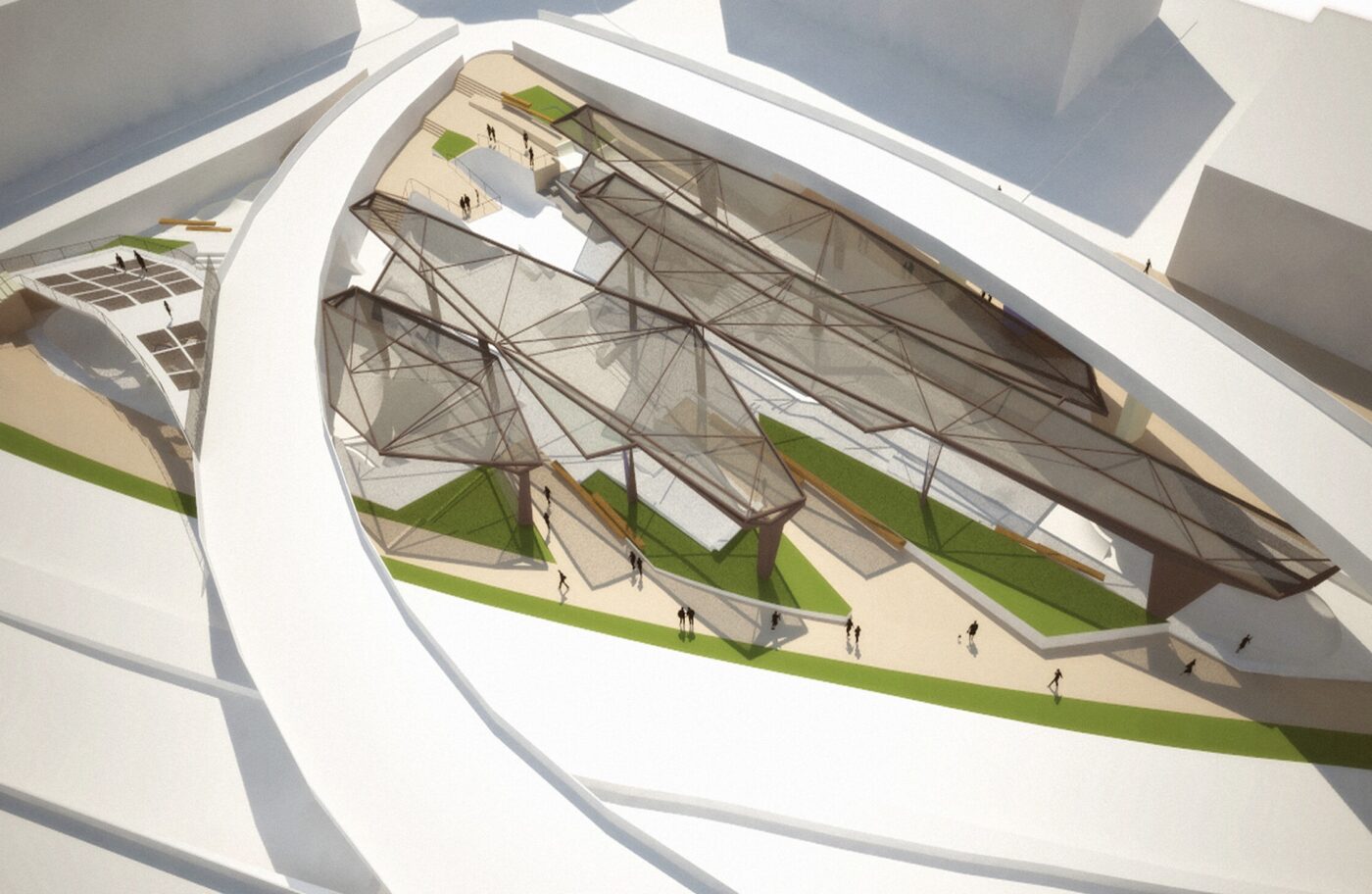 2019 rendering of skate park and plaza as seen from NW Everett.
2019 rendering of skate park and plaza as seen from NW Everett.
(Image: DAO Architecture)
“The skatepark near the Steel Bridge will be a world class attraction.”
The Portland Parks & Recreation (PP&R) bureau will use $15 million in Parks System Development Charges (fees paid by developers) to build a skatepark near the Steel Bridge just west of Waterfront Park. The news was announced this morning by Parks Commissioner Dan Ryan, who said the investment will be enough to “fully fund” the Steel Bridge Skatepark.
The site has been eyed by advocates since 2001 when Portland’s first skatepark was built at Pier Park in St. Johns. The idea for a park in the 35,000 square-foot parcel bound by NW 1st, Everett, and Naito Parkway was first formalized as the “crown jewel” of 19 facilities in Portland’s 2008 Skatepark System Plan. In 2011, Portland-based DAO Architecture developed a plan for the site (available here) under the guidance of the City of Portland and an advisory committee. BikePortland has covered this project several times since an effort to re-launch the idea was first announced in early 2019.




 Renderings and maps from DAO Architecture.
Renderings and maps from DAO Architecture.At least two previous attempts to build this park fell through, but it seems the urgency around downtown revitalization — combined with growing popularity in skating since the pandemic — was enough to finally get it over the hump this time around. Beyond the need for funding, the project is additionally complex because of overlapping jurisdictional boundaries. The Portland Bureau of Transportation (PBOT) manages the city streets, TriMet light rail vehicles use one of the overpasses, Union Pacific Railroad operates a line nearby, PP&R is in charge of the riverfront paths, and the Oregon Department of Transportation owns the ramps on and off of the Steel Bridge.
Three years after skateboard and Old Town neighborhood advocates coalesced around a renewed push for the skatepark, a diverse group of advocates held a symbolic groundbreaking at the site. Among them were staff from The Street Trust, who strongly support the project because of how it will encourage non-motorized transportation. The location is also a key link in the bike network that has long been eyed as a gap by PBOT. Once the skatepark is complete, improved connections between paths in Waterfront Park, Naito, and the NW Flanders neighborhood greenway will finally be realized.
In recent years, the site has been home to a large encampment of people who made the grassy lot their home. In March of last year, a fire under the bridge tied to the encampments caught Commissioner Ryan’s attention and appears to have also lit a fire under finally getting the skatepark built.
The design of the park includes a roof so that it can be used during rainy weather. Here’s more about the vision for the site from DAO Architecture:
The park’s design creates a unique urban landscape, weaving together skatable and non-skatable fingers of terrain. These intertwined, traversing fingers create a public realm that’s dynamic and challenging for skaters, yet contains safe havens for pedestrians and spectators, thus blurring the line between a traditional, segregated skatepark and an urban plaza. The park is a sculptural urban space, optimized for skating, which integrates infrastructure, architecture, landscape, and art.
The roof canopy’s origami-like form emerged from the folded nature of the site’s groundplane and connects symbolically to the district’s Asian cultural history. Long-span, folded-truss structural frames are supported by a minimal number of unobtrusive supporting columns constructed of COR-TEN plates and wire mesh, recalling the industrial appearance and lightness of the adjacent Steel Bridge. Long-span, translucent-fiberglass roof cladding provides natural light to the surface below. An integral, thin-film photovoltaic membrane provides a measure of shading, while capturing solar energy to power the park’s lighting and electrical systems. The inverted-canopy roof-forms serve as stormwater gutters, leading to columnar downspouts that empty into engineered planter boxes, which retain stormwater on site. A remnant freeway-ramp remains as an artifact but is repurposed as an additional pedestrian overlook for viewing the action in the skating bowls beneath.
In his statement today, Commissioner Ryan said, “When we have more places to play, there is a better quality of life for our city. Transforming part of Old Town into a citywide recreation destination will be a tremendous asset for our businesses, neighbors, and visitors from all over.”
And Ryan Hashagen, director of Steel Bridge Skatepark Coalition promised the new park would be a “world-class attraction. “It will breathe life and energy into Old Town,” and, “will activate the area by providing a recreational space for people, inclusive of all backgrounds and abilities.”
PP&R Director Adena Long echoed those sentiments by calling the project, “an appealing way to enliven and improve this area of downtown.”
From here, PP&R says they’ll begin property acquisition, public outreach, and a design process this coming spring. Stay tuned to learn about opportunities to share your feedback.

